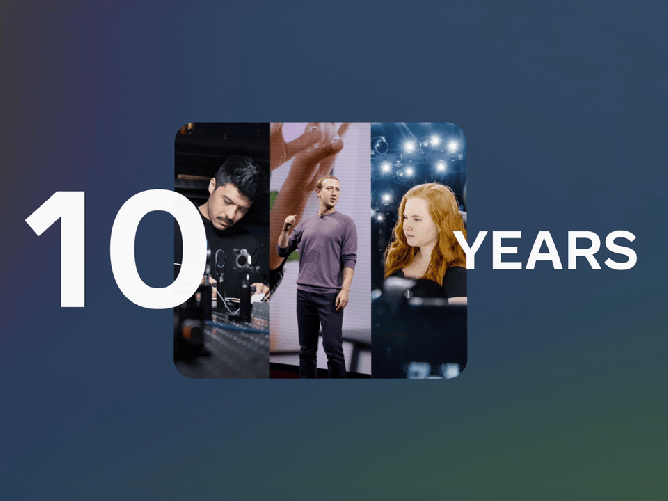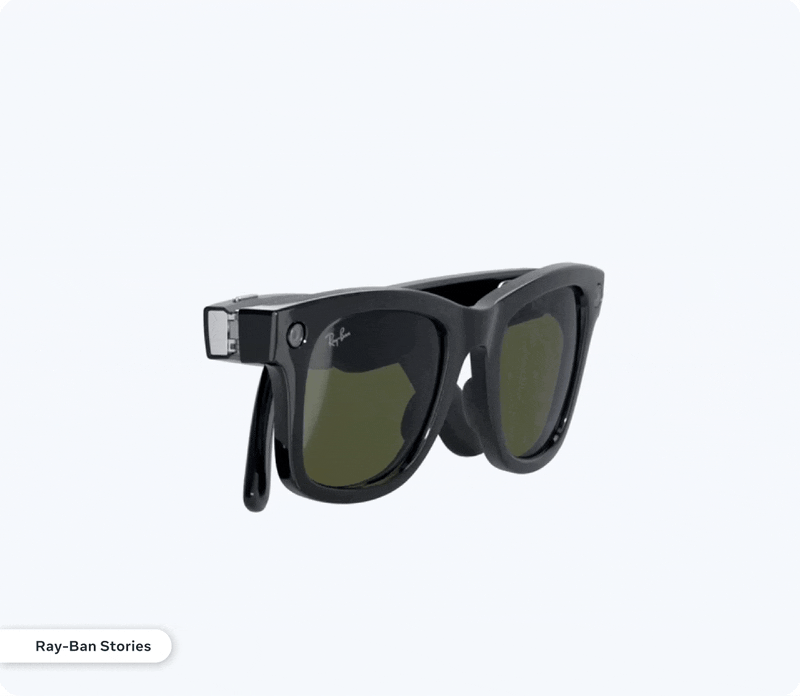
“Virtual reality was once the dream of science fiction. But the internet was also once a dream, and so were computers and smartphones. The future is coming, and we have a chance to build it together,” said Mark Zuckerberg in March 2014.
It’s now been 10 years since Mark Zuckerberg announced the acquisition of Oculus and began pushing forward his vision of the metaverse in earnest. That’s a decade of investment in Reality Labs, including futuristic research, continuous product development and a whole lot of prototypes.
Today, we’re taking a step back to celebrate a decade of innovation, the people who had faith in this space long before it became mainstream and the community that’s made it all possible.
The Early Days of VR
It all started with a dev kit, a dream and a healthy amount of duct tape. Over 9,000 enthusiasts pledged a combined $2.4 million to help make the dream a reality. The Oculus team transported people from their living rooms to stand on top of a skyscraper and look a Tyrannosaurus rex in the eye — and we were just getting started.
Oculus Rift kicked off the modern VR era in March 2016, followed by our first-generation Touch controllers in December of that year. Touch opened up a new world of possibilities, like scaling a cliff face with your own hands in The Climb and gesturing to cast spells in The Mage’s Tale.
Oculus Go was our first standalone VR product, shipped in 2018. Starting at $199 USD, it offered dramatically improved visual clarity. Oculus Go gave people a front-row seat to concerts, movies and sporting events, while also letting them hang out with friends in ways that wouldn’t be possible with today’s smartphones.
Oculus Rift S launched in May 2019, incorporating the inside-out tracking technology that eliminated the need for external sensors. We saw the freedom that wireless, standalone headsets could offer, and then went all-in on all-in-one.
Click to view slideshow.Embarking on an Epic Quest
Then came Quest — the world’s first standalone VR headset — in 2019. For the first time, people could freely explore virtual worlds, no wires required. We welcomed even more people into the fold with Quest 2. And we let them explore and interact with the virtual world using their own hands, thanks to AI breakthroughs in hand tracking.
We saw technological developments like Passthrough and Air Link in 2021, which lets people stream their PC VR games wirelessly to Quest over WiFi.
With Quest Pro in October 2022, we introduced the world to compelling mixed reality, complete with eye tracking and Natural Facial Expressions. And just a year later, we introduced Meta Quest 3, the world’s first mass-market mixed reality headset — letting people around the world seamlessly blend the virtual and physical worlds. From learning piano at your kitchen table to dancing in a virtual Zumba studio or getting a courtside view of NBA games from your couch, Meta Quest 3 transforms your home into a space for endless new experiences.
Click to view slideshow.A Portal Into New Forms of Connection
Portal, Meta’s smart home device, served up information, entertainment and more with a screen and AI-powered Smart Camera to keep people in the frame during video calls. An award-winning playwright used Portal to collaborate with actors and a director from 3,000 miles away. Military families used Portal to stay connected and enjoy Story Time during deployment. And families living across the country used it to spend quality time together during the pandemic. While we’ve since moved on to focus on other products, Portal was a smart home device ahead of its time and one of the first to integrate screens for video calling.
Smart Phones Meet Smart Glasses
In September 2021, we launched Ray-Ban Stories, our first-generation smart glasses produced in partnership with EssilorLuxottica. With open-air audio, they were ideal for listening to music, catching up on podcasts and taking calls on the go. Ray-Ban Stories gave people a new way to capture the moment while staying fully present in it, thanks to hands-free capture of high-quality photos and videos.

In October 2023, we introduced the Ray-Ban Meta smart glasses collection. We integrated Meta AI on Ray-Ban Meta smart glasses in the US and optimized it for a hands-free experience. By saying “Hey Meta,” people can engage with Meta AI to spark creativity, get information, and control their glasses — just by using their voice.
Click to view slideshow.And thanks to AI, the glasses will keep getting better and smarter over time. New AI experiences are coming soon including multimodal AI, so the glasses can understand what you’re seeing to provide helpful answers. Let’s say it’s dinnertime and you’re out of ideas. You’ll be able to lay out some ingredients on the counter and ask Meta AI to give you recipe suggestions. Or say you’re traveling and come across a sign in German. You’ll be able to look at the text and ask Meta AI to translate it for you on the fly.
Relentless Research
Reality Labs Research was founded with an understanding of the importance of making big bets on extended time horizons. Our research teams are dedicated to pushing the state of the art forward: from display systems to haptics and beyond. And we regularly publish our work, sharing it with the broader research community so they have an opportunity to extend it.
Our research and product teams are continuing to explore new areas that could become industry standard in the years to come, including EMG, hyper-realistic Codec Avatars and contextualized AI — all of which we believe will help people seamlessly interact with their devices and each other as the next great paradigm shift in computing takes hold.
And Speaking of AI
This is where our two big bets as a company come together. While Quest 3 offers compelling mixed reality experiences, from fully immersive to those that let you interact with the physical world and digital content in tandem, and Ray-Ban Meta smart glasses give you access to the utility and entertainment of Meta AI, AR glasses will deliver the best of both worlds as these two technological paths converge.
Just like the smartphone didn’t eliminate the laptop or desktop computer, AR glasses won’t be the end of mixed reality headsets. Rather, we see a constellation of devices forming the fabric of the future. We believe the smart glasses we have now, on the road to full AR glasses, are going to have much broader appeal.
We’re building a new kind of computing platform that will help you better connect with the people and things you care about in a way that’s much more natural and intuitive than what’s possible with today’s 2D screens. That means experiences that help you sync up with friends and family to work, learn, play, shop and create — as well as completely new experiences that don’t easily fit into the mold of how we use computers and smartphones today.
Technology — especially technology that connects people — should be available to as many people as possible. That’s the foundation of what we do, and it’s core to our DNA. Innovation is all about delivering new breakthroughs — and to truly do that, you need to bring those breakthroughs to the masses.
We’re committed to continuing to build out in the open with partners who help pave the way. And we can’t wait to see what the next 10 years have in store.
The post Celebrating 10 Years of Reality Labs appeared first on Meta.















 English (US) ·
English (US) ·